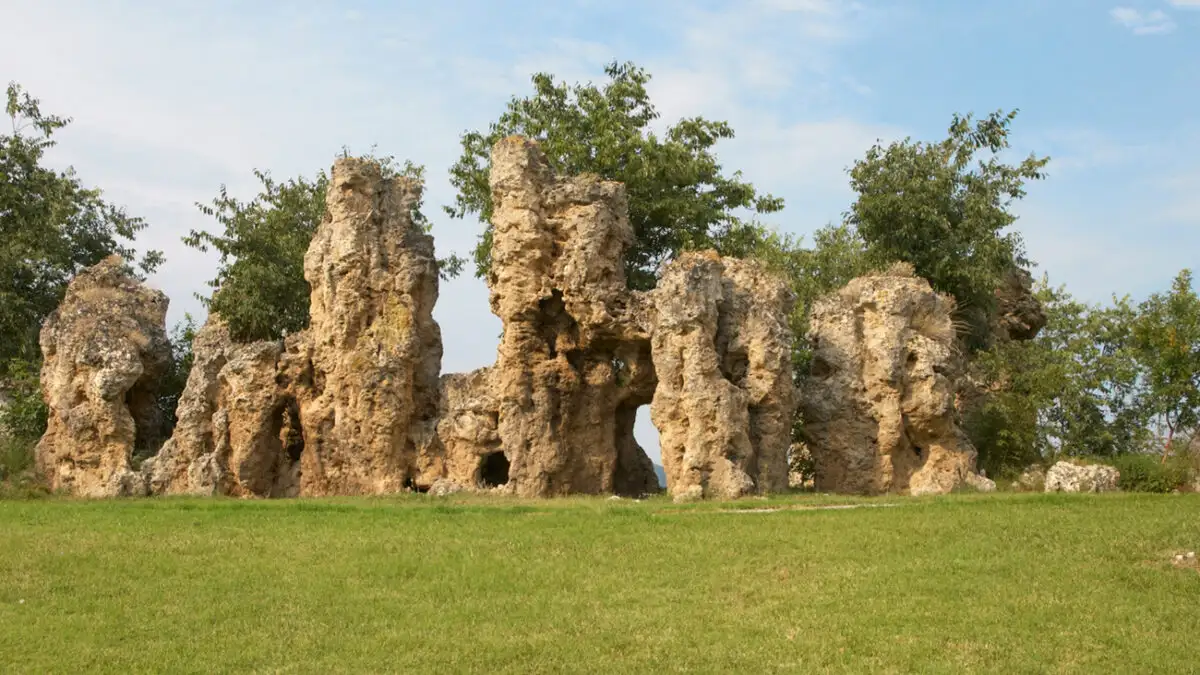The systematic excavation and identification of the ancient theater of Lefkada is currently underway, aiming to bring to light the most emblematic monument of the ancient city.
According to an announcement from the Greek Ministry of Culture, extensive archaeological remains have been uncovered during rescue excavations conducted by the Ephorate of Antiquities of Aetolia-Acarnania and Lefkada. These findings include sections of the city's fortifications, residential areas, cemeteries, and port structures, discovered during both public and private construction projects.
The Historical Significance of Ancient Lefkada
Founded before the late 7th century BCE by the seafaring Corinthians on the northeastern tip of the island, Lefkada was a powerful city-state. Its strategic location along major maritime routes connecting North and West contributed to its economic and cultural prosperity.
The only systematic excavation on the island in recent years, following the major digs led by W. Dörpfeld, was launched with the goal of unearthing the city's most significant monument—its ancient theater. Located approximately 3 km south of modern Lefkada, the theater sits on the northeastern slope of the middle hill of Koulmos, surrounded by olive groves and offering panoramic views of the strait and the coastal plain where the ancient city once thrived.
Rediscovering the Theater: From Lost to Found
Until 2015, very little was known about the theater, aside from test trenches excavated in 1901 by E. Kruger, a collaborator of W. Dörpfeld. These findings, documented in Kruger's book Alt Ithaka, were reburied after the excavation, and over time, the theater's location was completely obscured by olive groves and makeshift storage buildings.
The theater was rediscovered in 1997 by the IB’ Ephorate of Prehistoric and Classical Antiquities, aided by the site's distinctive geomorphological features and surface-level remains. In 2015, under the direction of Dr. Olympia Vikatos, coordinated efforts began for a systematic excavation, ultimately succeeding thanks to collaboration with then-mayor K. Drakontaeidis and support from the DIAZOMA association.
The Systematic Excavation Begins
The first test trenches, funded by the Municipality of Lefkada, revealed stone seating (edolia), the orchestra, and the retaining wall of the stage. The full excavation commenced in 2017, led by the Ephorate of Antiquities of Aetolia-Acarnania and Lefkada, with €200,000 in funding from the Ionian Islands Region and the Municipality of Lefkada, under a programmatic agreement with the Ministry of Culture.
Initially, the excavation took place on privately owned land, with the consent of the owner, allowing work to proceed before the official expropriation process was complete. Within just five excavation seasons, by 2023, the archaeologists had uncovered a large and impressive ancient theater.
Key Findings of the Excavation
Led by Dr. Olympia Vikatos, the excavation team included archaeologists Vivian Staikou and Barbara Gkiza, surveyor Georgios Lolos, architect Nikos Chatzidakis, and conservation specialist Afroditi Tiligada.
Given the site's overgrown condition, the excavation required removing large olive trees, extensive soil displacement, and dismantling modern structures. Despite these challenges, researchers have revealed:
The cavea (koilon), orchestra, parodoi (side entrances), retaining walls, and a significant portion of the stage
Tiers of stone seating, divided into 12 wedge-shaped sections by 13 staircases
Orchestra forming a perfect circle, partially carved into the bedrock, with an outer diameter of 16.65 meters
Elaborately decorated stone thrones, adorned with lion paws, dolphins, birds, and sirens, reserved for priests and officials
Architectural and Structural Features
The main theater consisted of 21 rows of seating, with a possible upper section (epitheatron) extending beyond the 21st row. The total capacity is estimated at 3,500 spectators, but if fully completed with the epitheatron, it could have accommodated 10,000–11,000 people.
The stage building (skene), measuring 20 meters long and 13 meters wide, was preserved at its foundation level. The discovery of numerous column fragments and epistyles suggests that the logeion (raised stage area) featured a 16-column Ionic colonnade, accessed by ramps on either side.
Dating and Historical Context
The theater’s construction likely began in the 4th century BCE, a period of economic prosperity for Lefkada, similar to other major public buildings of the time. However, later modifications indicate that it was in use well into the Roman era.
Following the foundation of Nikopolis by Emperor Augustus in 31 BCE, many Lefkadians were forcibly relocated to the new city, leading to the theater's gradual abandonment. Over the centuries, its stone materials were repurposed for newer buildings, and modern structures were even erected on the site.
The Theater’s Future: Preservation and Restoration
Despite the passage of time and human interventions, the theater remains harmoniously integrated into its natural landscape, offering breathtaking views of the region. It is the most significant and imposing monument ever discovered in ancient Lefkada.
The upper section of the cavea and parts of the stage are yet to be excavated, pending land expropriations initiated during a 2020 visit by the Minister of Culture, Lina Mendoni.
A restoration study and conservation plan have already been completed and submitted for approval by the Central Archaeological Council (KAS). Once approved, the monument will be eligible for inclusion in a co-funded restoration program.
Acknowledgments
The Greek Ministry of Culture has expressed gratitude to the regional governors and mayors who played a crucial role in securing agreements and funding for the excavation.
With ongoing efforts, this remarkable theater of ancient Lefkada is gradually reclaiming its place in history, offering invaluable insights into the island’s cultural and architectural heritage.









